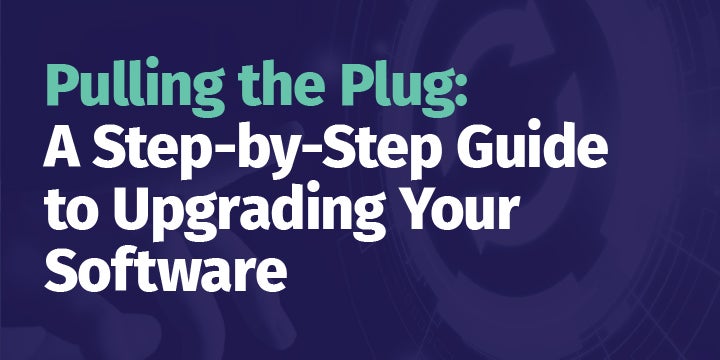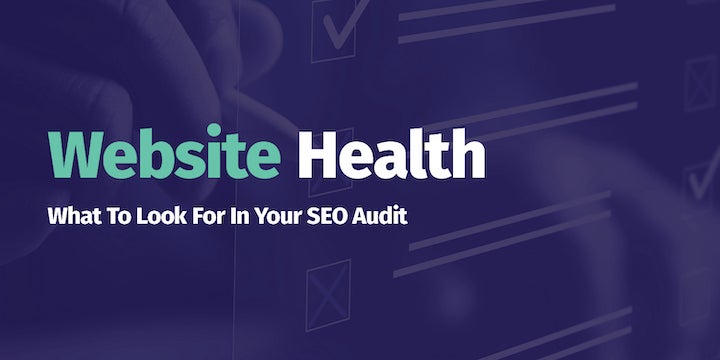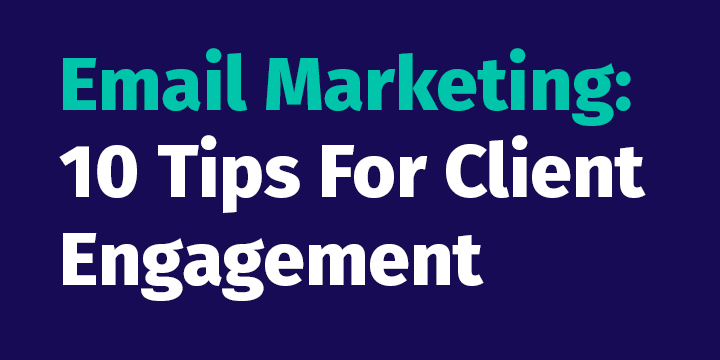On-Site SEO vs. Off-Site SEO

What’s the Difference and Why Are They Both Important for Your Business?
Understanding strategies to improve both your approach with on-site SEO and off-site SEO will help boost your overall marketing campaign.
No business owner can deny the importance of developing a well-written website. It allows you to communicate effectively with your audience about your brand, products, services, history, and business philosophy; it’s a window into who you are and the ideals your company represents.
A big part of your SEO goals revolves around creating content that keeps you climbing towards the top of the search engine result page (SERP). However, an effective SEO strategy requires more than just optimizing content on your website. Success in organic search engine results requires a dynamic approach that considers both on-site and off-site (also known as off-page) SEO.
Today, we’re going to discuss both on-site SEO and off-site SEO, and why both are important strategies in online marketing. If you peruse all our Eguides, you will quickly discover that all elements of online marketing are related; one aspect won’t prove optimally successful without the others, and on-site and off-site SEO are no exception. Understanding strategies to improve your approach with both on-site SEO and off-site SEO will help boost your overall marketing campaign.
What Is On-Site SEO?
On-site SEO includes creating high quality content for your audience. Google algorithms look for quality, relevant information that will prove useful to users. As you develop this content, you want to do so to prove that you’re an authority in your field, an expert at what you do, and that you can be trusted by your consumers. Easier said than done right? Here are ten useful strategies that you can incorporate into your site to improve your on-site SEO.
Ten Essentials For On-Site SEO
1. Thoughtful Headlines and Header Tags
Headlines serve as the first impression of your content. Therefore, you want headings (and subheadings for that matter) to be engaging so that readers click on your content or continue to read a page. Headers will help intrigue your audience and keep them reading. Your headline should serve as the title for your work, and the subheadings to follow should break your work into subtopics that make it easy for readers to engage with your content in bite-sized chunks. Providing structure and context to your pages will keep users engaged whether they’re looking to understand the whole of what you’re discussing or to scan through to find a snippet of information.
2. Quality of Writing
Headings and subheadings help format your work with finesse, but it’s also imperative to think about the content itself. You want users to read the pages within your site and understand the message or information you’re communicating to them in a meaningful way. Content is king. If you’re looking to gain readership and a customer base centered around trust, you’re going to want to establish yourself as a credible authority. The content within your site, whether written or video, is central to retaining and building a positive reputation within your target audience.
3. Answering User Questions
Whether users Google a question or Google a phrase that is part of a question, they’re likely searching for you to seek an answer. They may be looking to solve a problem or looking for information; regardless, your site should anticipate common user questions and provide useful, relevant answers. You can accomplish this through a Q&A section on your page or by weaving answers to user questions into the fabric of your headings and content. Whatever the case may be, you want to clearly answer users’ questions on your site.
4. Use Keywords and Phrases
First, a word of caution: whenever we discuss keywords and phrases, we always want to emphasize using them strategically. Google frowns upon keyword stuffing. Therefore, you must utilize keywords and key phrases to your advantage by weaving them naturally into your content and your headlines. Keywords include the geotarget as well as words and phrases that users look for when searching for your service or product them to topically relevant content.
5. Internal and External Linking
Part of establishing your credibility means linking to other resources within your site or to other useful resources on the internet. Establishing credible links helps bring your users to the information they need efficiently. It also helps readers know that you’re a valuable resource. By linking to pages within your site, it keeps readers engaged in your content for a longer period of time which boosts rankings. Furthermore, adding links to other credible sites reminds browsers that they can trust you to lead them to topically relevant content.
6. Schema Markup
As Google ad other search engines are updating algorithms, they are emphasizing the importance of audience appeal. Meaning, they want to establish a level of clairvoyance to immediately provide the exact information that users are searching for. Schema markup helps search engines accomplish this task. This form of microdata found at Schema.org creates an enhanced description of content on a website. It allows search engines to gain a bigger picture of what’s on a page so that it can provide richer and more accurate search results for users.
7. URL Structure
The structure of URLs should convey the larger architecture of your website. When executed correctly, a URL allows users to quickly understand what kind of page they’re reading, whether it’s a blog, a service option, or your company’s history. This method of cataloging information helps the reader understand the topic and how it’s woven into the greater fabric of your web content. Even further, it helps index your page so that Google can understand what the page is about and when to deliver that page to your audience.
8. User Engagement
Your website should be user friendly. Not only should content be useful and graphics appealing, but there should also be elements that keep users involved, whether that’s the ability for users to chat with a service representative, fill out an online form, watch an informative video, or link to a resource that enhances the content on your site.
9. Ease of Use Across Device
Your site needs to be aesthetically pleasing and useful across devices. People interact with the Internet all the time, and your site needs to be navigable whether they’re using a computer, a tablet, or a cellphone. Furthermore, the content needs to load quickly so that people can interact with your brand efficiently. You don’t want them navigating away from the page as they wait for your content to appear.
10. Frequent Auditing
Collecting data will help you evaluate how well your SEO strategy is working for you. The Internet is constantly collecting data, and a useful, targeted analysis of this data will help you validate your online marketing practice. On the flip side, data will show you how you can tweak and revise your strategy so that it’s working optimally for you.
Analytic tools such as the FieldRoutes® Compass marketing portal will provide a platform that exhibits your data in a straightforward way to help guide your overall marketing strategy.
In the end, on-site SEO is all about the user response to content and how useful and engaging it proves to be for consumers. Search engines reward credible content that’s easy for users to navigate, meaning that they stay on the site longer. However, for users to stay on the site, they must find their way to your site amidst seemingly endless competitors. That’s where off-site SEO comes into play
What Is Off-Site SEO?
Intuitively, off-site SEO involves techniques that relate to activities outside of your site. These strategies will encourage users to engage with your brand and will ultimately lead them to your site so that they can peruse your resources and understand who you are as a company.
If you don’t think about both off-site and on-site SEO, you will struggle to compete on the SERP. Off-site SEO helps users recognize your legitimacy and build your site’s authority; they’re the signs and signals that lead people to your page.
Eight Essential Strategies for Off-Site SEO
There are some sure-fire techniques that will help you build your off-site SEO game plan. When coupled with a quality, frequently updated site, you will have a dynamic plan towards keeping current customers, recruiting new customers, and building your brand
1. Link-Building
Link-building should serve as the foundation of any strong off-page SEO strategy. You want to earn quality links from other sites to help you establish authority. For link-building to be maximally effective, you want topically relevant and trustworthy sites to link to your content. Fortunately, the other essentials of a strong off-site SEO will only enhance your efforts to garner links to your product as they aid in building your brand and credibility.
2. Public Relations and Brand Awareness
A recognizable brand does wonders to enhance your business and contribute to a positive reputation. If people are searching for your brand specifically, they will always find your site and engage with your material. Therefore, brand awareness is a huge part of an effective off-site SEO strategy.
3. Content Marketing
Typically, we think of content marketing as publishing content, but understanding content marketing as a dynamic strategy means that you must think about off-site SEO strategies as well. You want others to link to your site which means that you want others to link to your site which means that you should be consistently updating your content, adding blog posts, and developing promotional opportunities. Even advertising campaigns serve as an effective off-site SEO strategy as they build your brand and bring people to your site.
4. Google My Profile (formerly Google My Business)
If you offer a service to your customers, they will want to know where you are located. Furthermore, customers value a local company that provides them with the information and services they need in their geographic area. In fact, 46% of all Internet searches are looking for services that are local. Therefore, it’s important that your information is up-to-date and easy to find.
5. Online Citations
Consistency with online citations build trust with search engines for your brand. The most important information is your NAP (name, address, and phone number) since if they are different, your brand trustworthiness can be split amongst several competing entities. Always check to be sure your marketing company offers a citation or "local listing" service, otherwise it will be difficult to fully capitalize on off-site SEO.
6. Influencer Marketing
Your off-site SEO campaign should build your brand and lead customers to your site and your services. If your product, promotion, or information appears on newsfeeds through social media platforms, it will lead customers back to our site. Pages such as Instagram, Facebook, and YouTube are prime real estate to feature links to your content. As you use influencers to amplify your content, you will reach new audiences which only helps to build your reputation.
7. Reviews
Positive reviews go a long way towards building your reputation and bringing in new customers. In fact, over 90% of users claim that reviews impact whether bringing in new customers. In fact, over 90% of users claim that reviews impact whether review strategy will help Google better understand your services and your brand. This will enhance your authority and ultimately increase your rankings. Furthermore, positive reviews build trust which can only lead to more interest in your brand.
8. Content Syndication
Syndicating content means providing resources from other sites that are topically relevant to the services you provide to your customer. For instance, linking to an article or video provided by the CDC regarding home sanitation will only help a campaign about rodent clean-up. This strategy should only be used to supplement your content and should always provide readers with the opportunity to link back to your website.
These eight essential off-site SEO strategies, if executed properly, will increase traffic to your site allowing readers to engage with your material. Ultimately, a comprehensive approach to SEO involves providing relevant, updated, and quality content to your readership. Off-site SEO will guide your customers towards your company’s biggest online presence – your website.
SEO and Marketing Analytics with FieldRoutes
A dynamic marketing strategy that considers on-site and off-site SEO requires time and experience. That’s where the experts at FieldRoutes can help. Our team of customer service representatives, content creators, implementers, and graphic designers will work with you and your budget to build your brand and generate more leads. Even further, we can prove it to you.
Our analytics tools will not only provide us with the data we need to revise your marketing strategy, but it will show you the information you need to know that your marketing dollars are well spent. We will help you unlock your website’s potential by:
Enhancing your search engine exposure through the effective use of keywords, phrases, metadata, and URL structure
Conducting SEO audits to make sure that content, links, page titles, meta descriptions, and design are all working and aligned with SEO best practices
Updating the information on your site by frequently adding new, unique, and quality content to keep your audience engaged
Updating Google My Profile (formerly Google My Business) and your local area listings to make sure that all citations in local search and directory listings are correct across the internet
Communicating with you through the FieldRoutes® Compass, our data consolidation tool that provides a single easy-to-understand view of your marketing efforts
Our team of experts specializes in field service web content, so you can confidently invest in our services knowing that our experience will enhance your reputation and your web presence. Even further, the FieldRoutes Marketing Suite with our Operations Suite will help your current and future customers engage with your products and services easily. Stop wasting your time and marketing efforts. Reach out to us today to learn how we can help.
Works Cited
Patel, Neil. (2021). “SEO is Turning into a Questions and Answers Game”. NEILPATEL.com. Retrieved from https://neilpatel.com/blog/seo-question/
Valencia, Alex. (2019, December 31). “E-A-T & YAML: How to Boost Your On-Page SEO”. Search Engine Journal. Retrieved from https://www.searchenginejournal.com/on-page-seo/eat-ymyl/
Varagouli, Erika. (2020, August 3). “What Is Off-Page SEO? A Comprehensive Guide”. Semrush. Retrieved from https://www.semrush.com/blog/off-page-seo/
Wilson, Amelia. (2020, January 3). “How to Use Header Tags: SEO Best Practices”. Search Engine Journal. Retrieved from https://www.searchenginejournal.com/on-page-seo/header-tags/#close
Your Partner in Growth
We hope this guide has been helpful. Whether you’re looking to add efficiencies, make things easier for your employees, improve your customer experience, increase sales, or anything in between, FieldRoutes is committed to helping your business reach its full potential.
The platform automates all aspects of field service operations for enterprise and small business customers that span office management, advanced route optimization, payment processing, digital sales, marketing, and customer acquisition solutions that accelerate growth, streamline operations, increase customer retention, and maximize revenue. Our Operations Suite and Marketing Suite were built with your customers and employees in mind and can help you grow quickly, scale intelligently, and serve customers relentlessly.
Call for a Demo at 207.492.4235
Join the growing number of thriving businesses using FieldRoutes to acquire new customers, improve automation, and crush the competition.





